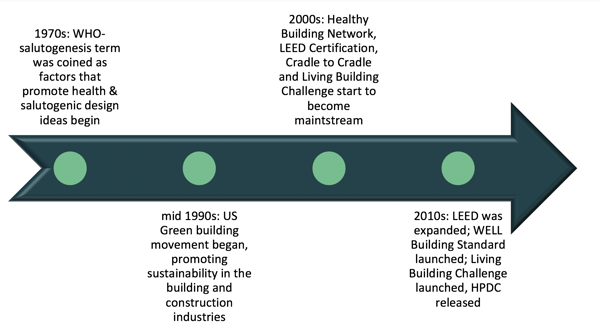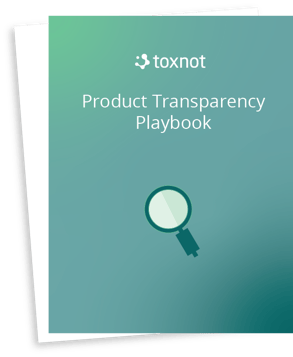Toxnot is promoting the creation of healthy buildings, but what does that mean? In much the same way that we’re still grappling to put a label on what exactly it means for a human to be ‘healthy’, each organization uses their own terminology to define a ‘healthy’ building.
First, let’s look at a sustainable building. Often, these structures are designed to incorporate the three pillars of sustainability: people, planet and profit.
- I believe the profit piece is always a driving factor, one that shows the world that these buildings are valuable and important, and that there is a market for them.
- The planet piece has been defined, and redefined for some time now- everything from incorporating energy efficiency, water reduction, GHG reduction, fewer new resources, minimizing waste and net positive impacts for climate change.
- Designing buildings to be healthy for the inhabitants hasn’t always been an easy task – especially in our increasingly resource-constrained world.
With multiple standards, certifications and cross-cultural influences, it’s been hard to nail down a 'healthy building' definition that everyone agrees on. Despite this, Toxnot is committed to being open to all methodologies and certifications in this growing field. The more we can help everyone, the better.
To get a good grasp on the language and ideals being used, I took a dive into the earliest notions of defining a healthy building and how it’s evolved over the past half century. The definition that spoke to me is the one incorporating language from the US Green Building Council (USGBC), incorporating ideas from an environmental and human health perspective:
Buildings that are environmentally responsible and resource-efficient, but also integrate “health, wellness and human experience in buildings”.
The US green building movement has been around for nearly thirty years. While the definition and criteria for these structures has evolved, so has the approach. Let’s take a snapshot of some key moments in the green building evolution:
Below are more noteworthy events, from the first use of the term ‘salutogenesis’ to our modern-day approach to the circular economy.
1970s- According to the World Health Organization, the term salutogenesis was first used by sociologist Aaron Antonovsky, referring to factors that promote health, as opposed to disease. “Salutogenic design aims to create physical environments that promote health and wellbeing and, ultimately, healthy societies,” Alan Dilani, Swedish Academy for Design and Health.
mid 1990s- Twenty years ago, the US green building movement began with a simple mission: promote sustainability in the building and construction industries.
1997- The US President and Congressional Commission on Risk Assessment and Risk Management reported on the importance of the indoor environment to human health
2000- The Healthy Building Network (HBN) was founded. HBN has “defined the leading edge of healthy building practices that increase transparency in the building products industry, reduce human exposures to hazardous chemicals, and create market incentives for healthier innovations in manufacturing.”
2000- LEED, the Leadership in Energy and Environmental Design certification program launched, focused on limiting the potential for projects to cause damage to the environment.
2002- Cradle to Cradle was first published as a strategy for a biomimetic approach to the design of products and systems it considers.
2004- Launch of the Enterprise Green Communities Standard, the national standard for affordable housing, to bring the improved health, economic and environmental benefits of sustainable construction practices to low-income families.
2006- The International Living Future Institute’s Living Building Challenge (LBC) was born after a mid 1990s effort to produce the most advanced sustainable design project in the world, to date: the EpiCenter in Bozeman, Montana.
2012- The Health Product Declaration Collaborative (HPDC) released the first approved HPD Open Standard V 1.0, a continuously evolving standard to report building product content and associated health information.
2013- LEEDv4 was announced, and refocused on the potential for projects to contribute positively to their communities and the environment. This update included six new impact categories, including human health.
2014- The WELL Building Standard launched as the “premier standard for buildings’ interior spaces and communities seeking to implement, validate and measure features that support and advance human health and wellness.”
2017- US EPA Healthy Buildings, Healthy People, A Vision for the 21st Century lays out a blueprint by which agencies and individuals across the country, and around the world, can focus their efforts towards improvements in the indoor environment and health.
Today- A two-fold complementary focus on both understanding what’s in our products and how the chemicals affect human health, and what the chemicals meant to a circular economy.
- Despite a building being energy efficient, water efficient and emitting less greenhouse gases, the building materials may still be harmful for human health and wellbeing. Understanding a product’s supply chain and the hazards associated with each chemical is the key to choosing safer substances.
- We must understand what’s in our products to be able to reuse or repurpose them in a circular economy. If we use hazardous chemicals in our original building products, or complementary materials (e.g. adhesives, caulking, paint) then we’ve ceased to consider a purposeful end of life.
Toxnot’s philosophy is to integrate our open platform with others in the green building network to foster an ecosystem approach to product disclosure. Enter your data once, then use it to understand your environmental and health impacts, report on the certifications, documents or lists that matter to you. Then publish them on material and product libraries where buyers are seeking out healthier products and tell your story.
You know it’s valuable, and so do we.
Let me know if there are other key milestones in the healthy building movement I missed and I’ll add them in for comprehensiveness. We look forward to continuing the discussion and encouraging thoughtful consideration of building materials.
Are you ready to start screening your products for red-list chemicals or WELL building standards restricted materials? How about creating a Declare Label, Health Product Declaration or LEEDv4 documentation? You can get started today, for free.
Bonus: Free Transparency Playbook
Tackling the challenges of product transparency isn't an easy task. Don't start out alone. If you want to start creating safer, less toxic building products you can start right now. We've developed your essential guide to launching your transparency initiatives for free.
Have Questions?





